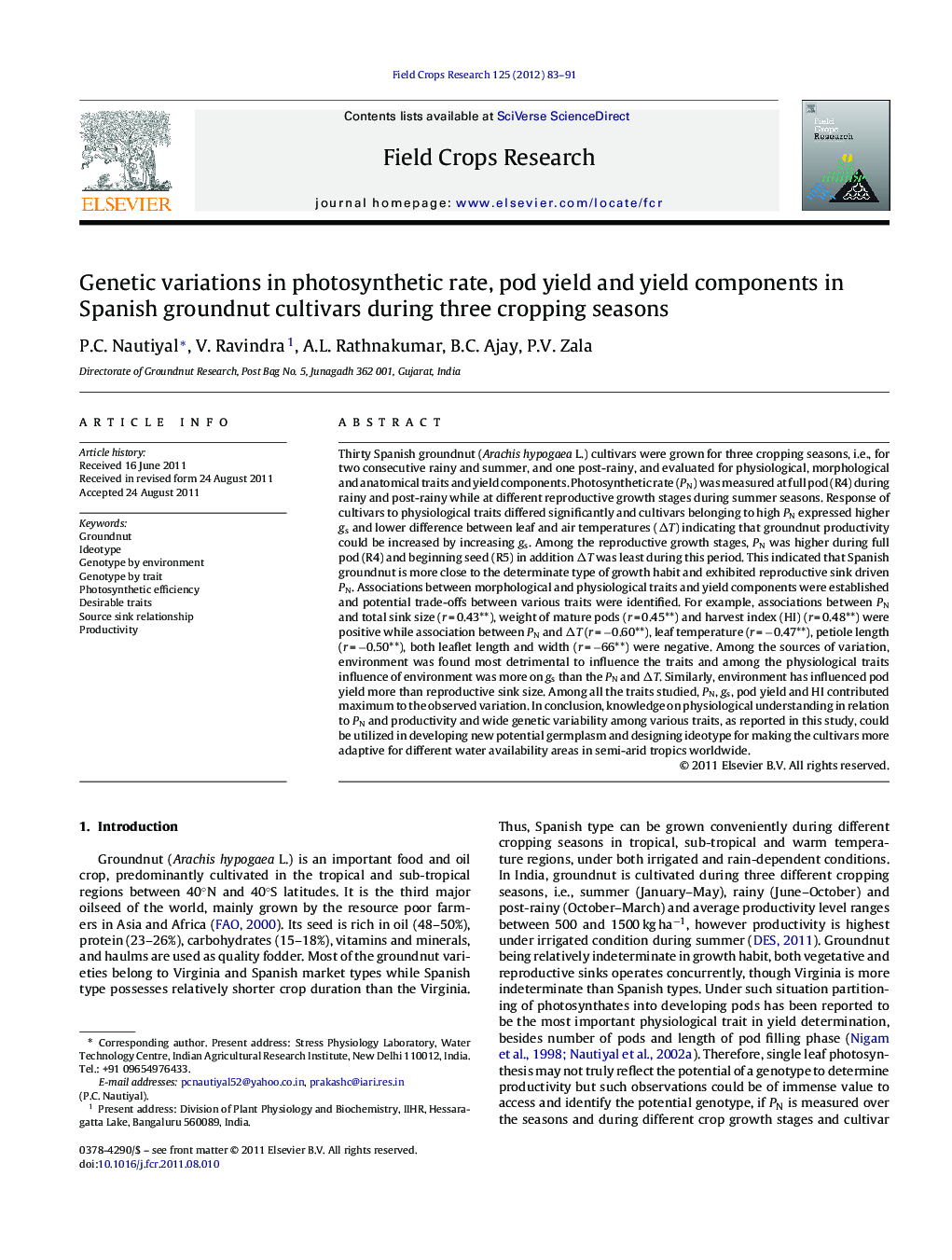| Article ID | Journal | Published Year | Pages | File Type |
|---|---|---|---|---|
| 4510512 | Field Crops Research | 2012 | 9 Pages |
Thirty Spanish groundnut (Arachis hypogaea L.) cultivars were grown for three cropping seasons, i.e., for two consecutive rainy and summer, and one post-rainy, and evaluated for physiological, morphological and anatomical traits and yield components. Photosynthetic rate (PN) was measured at full pod (R4) during rainy and post-rainy while at different reproductive growth stages during summer seasons. Response of cultivars to physiological traits differed significantly and cultivars belonging to high PN expressed higher gs and lower difference between leaf and air temperatures (ΔT) indicating that groundnut productivity could be increased by increasing gs. Among the reproductive growth stages, PN was higher during full pod (R4) and beginning seed (R5) in addition ΔT was least during this period. This indicated that Spanish groundnut is more close to the determinate type of growth habit and exhibited reproductive sink driven PN. Associations between morphological and physiological traits and yield components were established and potential trade-offs between various traits were identified. For example, associations between PN and total sink size (r = 0.43**), weight of mature pods (r = 0.45**) and harvest index (HI) (r = 0.48**) were positive while association between PN and ΔT (r = −0.60**), leaf temperature (r = −0.47**), petiole length (r = −0.50**), both leaflet length and width (r = −66**) were negative. Among the sources of variation, environment was found most detrimental to influence the traits and among the physiological traits influence of environment was more on gs than the PN and ΔT. Similarly, environment has influenced pod yield more than reproductive sink size. Among all the traits studied, PN, gs, pod yield and HI contributed maximum to the observed variation. In conclusion, knowledge on physiological understanding in relation to PN and productivity and wide genetic variability among various traits, as reported in this study, could be utilized in developing new potential germplasm and designing ideotype for making the cultivars more adaptive for different water availability areas in semi-arid tropics worldwide.
► Wide genetic variability in PN, gs and difference between Tair and Tleaf were observed. ► Physiological traits were closely associated with each other. ► Ideotype suitable for cultivation under normal irrigation and water deficit conditions was proposed. ► Potential cultivars were identified after analyzing G × ← E interaction. ► Groundnut productivity may be increased by altering the stomatal conductance.
